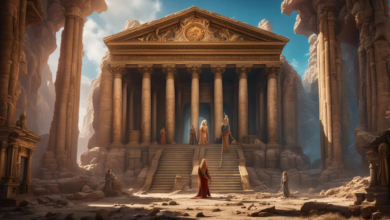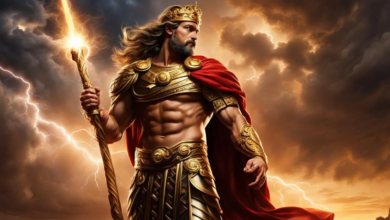Romulus and Remus: The Legendary Founders of Rome
In Roman mythology, nestled among tales of gods, heroes, and fantastical creatures, lies the enduring legend of Romulus and Remus, the twin brothers credited with founding the mighty city of Rome. Their story, interwoven with themes of destiny, fratricide, and divine intervention, has captivated audiences for centuries.
Birth Under an Ominous Shadow
The narrative begins in Alba Longa, a flourishing Latin city. Rhea Silvia, daughter of the rightful king, Numitor, served as a Vestal Virgin, sworn to a life of purity. However, fate, or perhaps the intervention of the war god Mars (in some variations, the demigod Hercules), intervened. Rhea Silvia became pregnant with twins Romulus and Remus.
This conception was a grave threat to King Amulius, Numitor’s ambitious younger brother who had usurped the throne. Seeing the twins as potential heirs, Amulius ordered their immediate execution. A servant tasked with the grim duty couldn’t bear to kill the helpless infants. He placed them in a basket and set them adrift on the River Tiber, hoping the current would carry them away to safety.
The She-Wolf and the Shepherd
The basket, tossed by the river’s current, eventually lodged at the Palatine Hill’s foot. Legend tells us that the twins were miraculously saved by a she-wolf who found them and nursed them back to health. In a later account, a shepherd named Faustulus and his wife Acca Larentia discovered the twins and raised them as their own.
Destiny Calls: The Rise of the Brothers
As Romulus and Remus grew, their natural leadership qualities shone through. They became herders, adept in the ways of the wild. A chance encounter revealed their true lineage, sparking a desire to restore their rightful place. The brothers rallied the people of Alba Longa, stormed the palace, and slew the tyrannical Amulius.
A Divided Vision: The Founding of Rome
With their grandfather, Numitor reinstated as king, Romulus and Remus set their sights on a new venture – founding their own city. However, a disagreement arose concerning the location. Romulus favoured the Palatine Hill, while Remus preferred the Aventine Hill. To settle the dispute, they turned to augury, a form of divination.
According to the most widely known account, Romulus received a more favourable sign, twelve vultures compared to Remus’ six. Unconvinced and perhaps harbouring some lingering resentment, Remus scoffed at the results. Tension escalated, culminating in a tragic act of fratricide. Some versions claim Remus defiantly jumped over the boundary furrow Romulus had begun to plough around the Palatine Hill, an act seen as an insult to the developing city. In a fit of rage, Romulus struck his brother down.
The Birth of a City: Romulus and His Legacy
With his brother gone, Romulus completed the city walls and named the new settlement Rome (Roma in Latin). The date traditionally given for the founding of Rome is 753 BC. Romulus is credited with establishing the city’s government, social structure, and religious practices. He is said to have ruled for thirty-eight years before disappearing in a sudden storm, some believing the gods took him up.
A Story Steeped in Symbolism
The legend of Romulus and Remus is rich with symbolism that resonated with the ancient Romans. The image of the she-wolf nurturing the twins became an iconic emblem of Rome, signifying its strength and wild spirit. The fratricide, though a dark stain on the narrative, underscored the city’s potential for both greatness and internal conflict, a theme that would echo throughout Roman history.
Beyond the Myth: Historical and Literary Influences
While the tale of Romulus and Remus is undeniably a myth, its influence on Roman history and culture is undeniable. The story legitimised Roman authority, tracing the city’s origins back to the divine realm through Mars. It also provided a foundation for Roman identity, fostering a sense of unity and destiny.
The written accounts of the myth, compiled centuries after the supposed founding of Rome, reflect the literary trends of the time. Authors like Virgil, in his epic poem, the Aeneid, incorporated elements of Greek mythology, weaving the story of Romulus and Remus into a larger narrative that linked Rome to the legendary Trojan hero Aeneas.
An Enduring Legacy
The legend of Romulus and Remus continues to capture our imagination. It offers a glimpse into the Roman worldview, highlighting themes of power, fate, and the struggle for civilisation. The image of the twins, forever linked to the she-wolf, remains a powerful symbol of the Eternal City. Even if the historical accuracy of the tale remains debatable, the story of Romulus and Remus serves as a testament to the enduring power.





